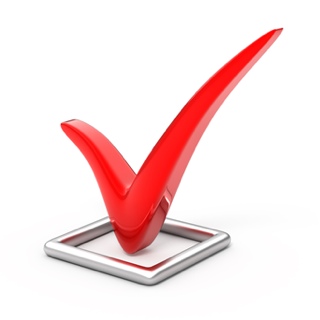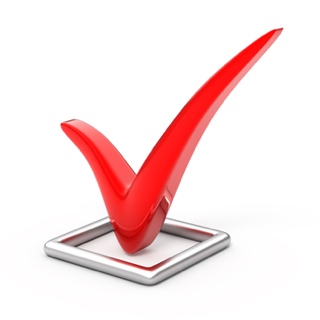Information
-
Document No.
-
Audit Title
-
Client / Site
-
Conducted on
-
Prepared by
-
Location
-
Personnel
4.2.2 Quality Documentation
-
Is the quality documentation up to date?<br>
-
Have changes to the organisation structure and responsibilities been reflected in the QMS?
-
Are justification for any exclusions (see 1.2) accurate?
4.2.3 Control of Documents
-
Does a document control procedure exist?<br>
-
Are all documents required by the quality management system controlled?<br>
-
Are changes and revision status of documents identified?<br>
-
Are relevant versions of applicable documents available at points of use?<br>
-
Are controlled documents legible and readily identifiable?<br>
4.2.3.1 Engineering Specifications
-
Does the organisation have a process for timely review and implementation of customer engineering specifications?
4.2.4 Control of Records
-
Does a documented record control procedure established?
-
Are computer files adequately backed up and protected?
-
Are retention time of records defined?<br>
-
Are records legible, identifiable and readily retrievable? <br>
5.3 Quality Policy
-
Is the quality policy appropriate to the purpose of the organisation?<br>
-
Is the quality policy communicated and understood within the organisation?<br>
-
Is the policy reviewed for continuing suitability?<br>
5.4.1 Quality Objectives
-
Has top management defined and documented its quality objectives?<br>
-
Are the quality objectives measurable?<br>
-
Are the quality objectives consistent with the quality policy?<br>
5.5.1 Responsibility and Authority
-
Are responsibilities and authorities defined and communicated within the organisation?<br>
5.5.2 Management Representative
-
Has top management appointed a management representative?
-
Are responsibilities for the management representative in line with ISO9001?<br>
5.5.3 Internal Communication
-
Does management ensured communication processes are established within the organisation?<br>
-
Does communication takes place regarding the effectiveness of the quality management system?<br>
5.6.1 Management Review - General
-
Does top management review the quality management system, at planned intervals?<br>
-
Are records of management reviews maintained (see 4.2.4)?<br>
5.6.2 Review Input
-
Do inputs to the management reviews satisfy ISO9001 requirements?<br>
5.6.3 Review Output
-
Do the output of the management review include actions to improvement of the effectiveness of the QMS?<br>
6.1 and 6.2.2 Competence, Awareness & Training
-
Are personnel performing work affecting quality competent on the basis of appropriate education, training, skills and experience?<br>
-
Are personnel are aware of the relevance and importance of their activities and how they contribute to the achievement of the quality objectives?<br>
-
Are records of education, training, skills and experience maintained (see 4.2.4)?<br>
6.3 Infrastructure
-
Is the. infrastructure needed to achieve conformity to product adequate?<br>
6.4 Work Environment
-
Is the work environment needed to achieve conformity to product effectively controlled?<br>
7.2.1 Sales Enquiry and Order Process
-
Are enquiries and quotations defined and documented?<br>
-
Are enquiries logged and followed up?
-
Are statutory and regulatory requirements related to the product determined?<br>
7.2.2 Review of Requirements Related to the Product
-
Is a formal contract review conducted prior to the organisation's commitment to supply a product?<br>
-
Have records and actions arising from the review maintained (see 4.2.4)?<br>
-
Are verbal orders confirmed by the organisation before acceptance?<br>
-
Are relevant documents updated and personnel are made aware of changed requirements?<br>
7.2.3 Customer Communication
-
Is pertinent information determine communicated to customers?<br>
7.3.1 Design and Development Process?
-
Does the organisation plan and control product design and development?<br>
-
Are the responsibilities and authorities for design and development documented?<br>
-
Wherever practicable, is validation completed prior to the delivery or implementation of the product?<br>
-
Are records of design and development maintained (see 4.2.4)?<br>
-
Are design and development changes identified and records maintained?<br>
7.4.2 Purchasing and Receipt Verification Process
-
Do purchasing documents describe the product or service to be purchased?<br>
-
Does the organisation ensure specified purchase requirements are verified prior to the PO being issued?<br><br><br><br>
7.4.1 Supplier Evaluation and Approval
-
Are records of supplier evaluation and approval maintained (see 4.2.4)?<br>
-
Is the extent of supplier evaluation commensurate with the type of product/service being purchased?<br>
-
Has the criteria for selection, evaluation and re-evaluation been established?<br>
7.4.3 Verification of Purchased Product
-
Does the organisation inspect or otherwise verify purchased product to ensure it meets specified purchase requirements?<br>
-
Are records of receiving verification recorded and maintained?<br>
-
Does the organisation record non conforming products received from suppliers?
7.5.1 Warehouse and Despatch Process
-
Are products identified and protected while in storage?<br>
-
Are specific packaging requirements defined where appropriate?<br>
-
Is the warehouse equipment maintained effective?<br>
-
Are Proof of delivery records maintained?
-
Are picking errors recorded and analysed?
-
Do records indicate the person(s) authorising the release of product for delivery to the customer (see 4.2.4)?<br>
-
Are non conforming products clearly identified?
7.5.4 Customer property
-
Does the organisation identify, verify, protect and safeguard customer property?<br>
-
If any customer property is lost, damaged or otherwise found to be unsuitable, is this reported to the customer?<br>
7.5.2 (8.2.4) Manufacturing Process
-
Does the organization apply suitable methods to plan production?<br>
-
Are controls implemented over processes where the resulting output cannot be verified by subsequent monitoring or measurement?<br>
-
Does the organisation monitor and measure the characteristics of the product?<br>
-
Has evidence of conformity with the acceptance criteria been maintained?<br>
-
approval of equipment and qualification of personnel?<br>
-
Are work instructions and specific methods and procedures used?<br>
-
requirements for records (see 4.2.4)?<br>
7.6 Control of monitoring and measuring equipment
-
Is measuring equipment calibrated or verified at specified intervals?<br>
-
Is calibration traceable to national measurement standards?<br>
-
Is equipment safeguarded from adjustments that would invalidate the measurement result?<br>
-
Have records of the results of calibration and verification been maintained (see 4.2.4)?<br>
-
Does the organisation assess and record the validity of the previous measuring results when the equipment is found not to conform to requirements?<br>
8.2.1 Customer satisfaction
-
Are methods for obtaining customer feedback determined and recorded?<br>
8.2.2 Internal Audit
-
Does the organisation conduct internal audits at planned intervals<br>
-
Does the audit programme ensure that auditors do not audit their own work?<br>
-
Are records of the audits and their results maintained (see 4.2.4)?<br>
-
Are audit corrective actions taken without undue delay and do they eliminate potential causes?
-
Are audit actions verified as effective (see 8.5.2)?<br>
8.3 Control of nonconforming product
-
Does the organisation ensure that product which does not conform to product requirements is identified and controlled?
-
Have the controls and related responsibilities and authorities been defined in a documented procedure?<br>
-
by taking action appropriate to the effects, or potential effects, of the nonconformity when nonconforming product is detected after delivery or use has started?
-
When nonconforming product is corrected is it subject to re-verification to demonstrate conformity to the requirements?<br>
-
Are records of the nature of nonconformities and any subsequent actions taken, including concessions obtained, maintained (see 4.2.4)?<br><br>
8.4 Analysis of data
-
Does the organisation determine, collect and analyse appropriate data?<br>
-
Is action taken following analysis (see 8.2.3 and 8.2.4)?<br>
8.5.2 Corrective action
-
Has a documented procedure been established (including customer complaints)?<br>
-
Is corrective action taken to eliminate the causes of nonconformities?<br>
-
determining the causes of nonconformities?<br>
-
Are records of the results of action taken maintained (see 4.2.4)?<br>
-
Is the effectiveness of the corrective action taken maintained?<br><br><br><br><br><br>
8.5.3 Preventive action
-
Has a documented procedure been established for determining potential nonconformities?<br>
-
Has the organization determined action to eliminate the causes of potential nonconformities?<br>
-
Are preventive actions appropriate to the effects of the potential problems?<br>
-
records of results of action taken (see 4.2.4)?<br>
-
reviewing the effectiveness of the preventive action taken?<br>







